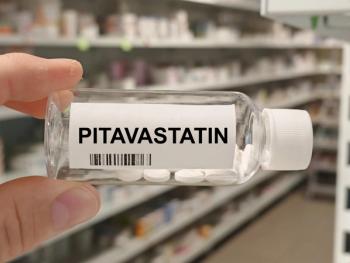
Alteration of the Hormone-free Interval in Oral Contraception
Ms. Terrie is a clinical pharmacy writer based in Haymarket, Virginia.
The majority of oral contraceptives(OCs) involve a regimenof 21 days of active pills followedby 7 days of placebo pills. The7-day hormone-free interval (HFI) typicallyresults in hormone withdrawalbleeding and was intended to mimicthe natural menstrual cycle. In recentyears, with increased recognition thatthe 28-day cycle is not a physiologicnecessity, interest has focused onthe role of the HFI in oral contraceptionand methods of altering it.1
Understanding theHormone-Free Interval
No health-related or physiologicbenefits are associated with monthlywithdrawal bleeding in a woman takingOCs.1,2 During the 7-day HFI of atypical 28-day OC regimen, exogenousestrogen and progestin are cleared 2to 3 days after a patient completesactive pills, levels of luteinizing hormone(LH) and follicle-stimulatinghormone (FSH) increase, and ovarianfollicular growth occurs.3,4 As a result,the possibility for ovulation during theHFI (escape ovulation) increases witheach hormone-free day.4 By decreasingthe HFI or by using low-doseestrogen rather than placebo, therisk for escape ovulation is reduced,possibly improving contraceptive efficacy.5
Hormone-Free Intervals:Is Shorter Better?
Studies have demonstrated thatconventional 28-day OC regimens thatutilize a 7-day HFI fail to induce completeovarian suppression.3,4 Recentstudies have focused on the safetyand efficacy of extending active combinationOC therapy and reducing oreliminating the HFI (see Table3,6-11).
Spona et al were the first to reportless ovarian activity in women randomizedto a shorter HFI.12 When theduration of active pills was increasedto 23 and the HFI was decreasedfrom 7 to 5 days, the risk of breakthroughovulation when pills wereomitted was decreased.12
Hormone WithdrawalSymptoms
Hormone withdrawal during theHFI may be associated with bothersomesymptoms such as headaches,migraines, pelvic pain and cramping,breast tenderness, bloating, andbleeding problems.13 Sulak and colleaguesevaluated the timing, frequency,and severity of hormone-relatedsymptoms in women using OCs, inparticular comparing the symptomswomen experience during active pillphases with those experienced duringthe HFI. As many as 70% of thewomen experienced pelvic pain andcramping during the traditional 7-dayHFI, compared with 21% of womentaking active pills. In addition, morewomen experienced headaches andbreast tenderness during the HFI, andmore reported the need for analgesia.The study concluded that almostall symptoms, including headache,pain, breast tenderness, bloating, andswelling, were considerably worseduring the 7-day HFI, compared with21 days of active hormones.
Table
Overview of Clinical Studies Evaluating Alterationsto the 7-day HFI in OC Regimens
Study Design (Ref)
Results
Randomized study of 21 days +7-day HFI vs 21 days + 10 mcg EEx 2 days + 5-day HFI vs 28 days (6)
7-day HFI demonstrated less follicularsuppression than 5-day orcontinuous regimens
Randomized study of 21 days +7-day HFI or x 28 days continuous(7)
Continuous OC regimens weremore effective in preventingdominant follicle developmentand escape ovulation
Randomized study of 168 dayscontinuous vs 21 days + 7-dayHFI x 6 cycles (8)
Continuous group reported fewerlight and moderate bleedingdays, and less bloating and menstrualpain
Randomized study of 3- vs 4-dayHFI (9)
Decreasing the HFI from 7 daysto 3 or 4 days provides greaterpituitary?ovarian inhibition andsuppression of hormone withdrawalsymptoms
Randomized study of 21 days +7-day HFI vs 84 days + 7-day HFIvs 84 days + 7 days EE (3)
10 mcg EE after 84 days demonstrateddecreased FSH levels anda reduced number of developingfollicles
Evaluation of premenstrualsyndrome symptomatology in42- to 126-day cycles (10)
Improvements in breast tendernessand dysmenorrhea
Randomized study of x 21 days +7-day HFI vs x 336 days (11)
Continuous use resulted in significantlyfewer bleeding days
EE = ethinyl estradiol; FSH = follicle-stimulating hormone;
HFI = hormone-free interval; OC = oral contraceptive.
Results from a recent study conductedby Legro et al have demonstratedthat continuous OC therapymay be more effective than conventional28-day OC regimens inreducing menstrual pain and controllingepisodes of heavy bleeding andother menstrual-related symptoms.14Continuous OC regimens providegreater suppression of activity in theovaries and endometrium; this suppressionis associated with improvementof menstrual symptoms.14 Furthermore,the researchers suggestthat continuous OC therapy may bebeneficial in treating chronic medicalconditions (eg, polycystic ovarian syndromeand endometriosis) in whichgreater suppression of the ovariesand endometrium are desired.
Reducing or Eliminating theHFI
Research regarding the impact of a7-day HFI and recent modifications toOC regimens have piqued the interestof many healthcare professionals andtheir patients.15,16 In April 1998, theFDA approved Mircette (Duramed) asthe first OC to use a shorter HFI. Eachpacket of Mircette contains 21 activetablets of 0.15 mg desogestrel/20mcg ethinyl estradiol (EE), 2 placebotablets, and 5 tablets of 10 mcg EE.In 2003, the FDA approved Seasonale(Duramed), the first extended OCregimen, and subsequently approvedother OC regimens that either reducethe number of HFI days for each cycle(Loestrin 24 Fe, Yaz) or eliminatethe HFI (Seasonique, Lybrel) (Figure).These formulations may decreasethe HFI withdrawal symptoms experiencedby women using OCs, reducemenstrual bleeding, and maximizeovarian follicular suppression.17-21
The Pharmacist's Role
Pharmacists are in a pivotal positionto provide women with the necessaryinformation to make informedchoices about OCs. Extended andcontinuous regimens give womenmore choices to accommodate theirindividual needs, especially thosewomenwho experience hormonewithdrawalsymptoms. Becausemany women discontinue OCs dueto symptoms attributed to the typical7-day HFI, the use of extendedand continuous regimens may be anideal choice. Patients seeking adviceon OCs should be encouraged to seetheir gynecologists to assess if theyare an appropriate candidate.
When counseling women aboutOCs, pharmacists should provide thepatient with thorough informationabout proper use and adverse effectsand risks associated with the use ofOCs. Patients should be remindedthat extended and continuous OCregimens have been associated withepisodes of breakthrough bleedingand spotting during the first 3 to 4months of therapy and that the incidencetypically subsides as therapycontinues. To minimize these episodes,patients should be remindedto take the pill at the same time eachday.
References
- Sulak P. Continuous oral contraception: changing times. Best Practice and Research Clinical Obstetrics and Gynecology. 2008 Apr; 22(2):355-74.
- Lin K, Barnhart K. The clinical rationale for menses free contraception. Journal of Women's Health. 2007 Oct;16(8):1171-80
- Vandever MA, Kuehl TJ, Sulak PJ, et al. Evaluation of pituitary-ovarian axis suppression with three oral contraceptive regimens. Contraception. 2008 Mar;77(3):162-70
- Baerwald, AR, Olatunbosun PA, Peirson RA. Ovarian follicular development is initiated during the hormone free interval of oral contraceptive use. Contraception. 2004 November; 70:371-377
- Mishell DR Jr. Rationale for decreasing the number of days of the hormone-free interval with use of low-dose oral contraceptive formulations. Contraception. 2005 Apr; 71:304-5.
- Schlaff WD, Lynch AM, Highes HD, Cedars MI, Smith DL. Manipulation of the pill free interval in oral contraceptive pill users: the effect on follicular suppression. American Journal of Obstetrics and Gynecology. 2004 Apr; 190(4):943-51.
- Birtch RL, Olatunbosun OA, Perison RA. Ovarian follicular dynamics during conventional vs. continuous oral contraceptive use. Contraception 2006 March; 73(7):235-43.
- Kwiecien M, Edelman A, Nichols MS, Jensen JT. Bleeding patterns and patient acceptability of standard or continuous dosing regimens of a low dose oral contraceptive: a randomized trial. Contraception. 2003 Jan;67(1):9-13.
- Willis S, Kuehl TJ, Spiekerman AM, Sulak PJ, . Greater inhibition of the pituitary--ovarian axis in oral contraceptive regimens with a shortened hormone-free interval. Contraception. 2006 Aug;74(2):100-3.
- Sillem M, Schneidereit R, Heithecker R, Mueck AO. Use of an oral contraceptive containing drospirenone in an extended regimen. European Journal of Contraception and Reproductive Health Care. 2003 Sep;8(3):162-9.
- Miller L, Hughes JP. Continuous Combination Oral Contraceptive Pills to Eliminate Withdrawal Bleeding: A Randomized Trial. Obstetrics and Gynecology. Volume 101, Number. 4, April 2003
- Spona J, Elstein M, Feichtinger W, et al. Shorter pill free interval in combined oral contraceptives decreases follicular development. Contraception 1996;54:71-7.
- Sulak P, Scow RD, Preece C, Riggs MW, Kuehl TJ. Hormone Withdrawal Symptoms in Oral Contraceptive Users. Obstetrics and Gynecology 2000 Feb; 95(2):261-6.
- Legro RS, Pauli JG, Kunselman AR, et al. Effects of continuous versus cyclic oral contraception. A randomized controlled trial. Journal of Clinical Endocrinology and Metabolism. 2008 Feb; 93(2):420-9.
- Rosenberg MJ, Meyers A< Roy V. Efficacy, cycle control and side effects of low and lower dose oral contraceptives: A randomized trial of 20 micrograms and 35 micrograms estrogen preparations. Contraception. 1999 Dec; 60(6):321-9.
- Nelson A. Communicating with patients about extended-cycle and continuous use of oral contraceptives. Journal of Women's Health. 2007 May; 16(4):463-70.
- Anderson, FD, Hait H and the Seasonale 301 Study Group. A multicenter randomized study of an extended cycle oral contraceptive. Contraception. 2003; 68:89-96
- Anderson, FD, Gibbons W, Portman D. Safety and efficacy of an extended regimen oral contraceptive utilizing continuous low dose ethinyl estradiol. Contraception. 2006 Mar; 73(3):229-34.
- Archer DF, Jensen JT, Johnson JV, et al. Evaluation of a continuous regimen of levonorgestrel/ethinyl estradiol: phase 3 results. Contraception, 2006;74:439-445.
- Bachmann G, Sulak PJ, Sampson-Landers C, Benda N, Marr J, Efficacy and safety of a low-dose 24-day combined oral contraceptive containing 20 ?g ethinylestradiol and 3 mg drosperinone. Contraception. 2004;70:191-198.
- Nakajima ST, Archer DF, Ellman H. Efficacy and safety of a new 24-day oral contraceptive regimen of norethindrone acetate 1 mg/ethinyl estradiol 20 ?g (Loestrin? 24 Fe). Contraception. 2007;75:16-22.
Newsletter
Stay informed on drug updates, treatment guidelines, and pharmacy practice trends—subscribe to Pharmacy Times for weekly clinical insights.














































































































































































































